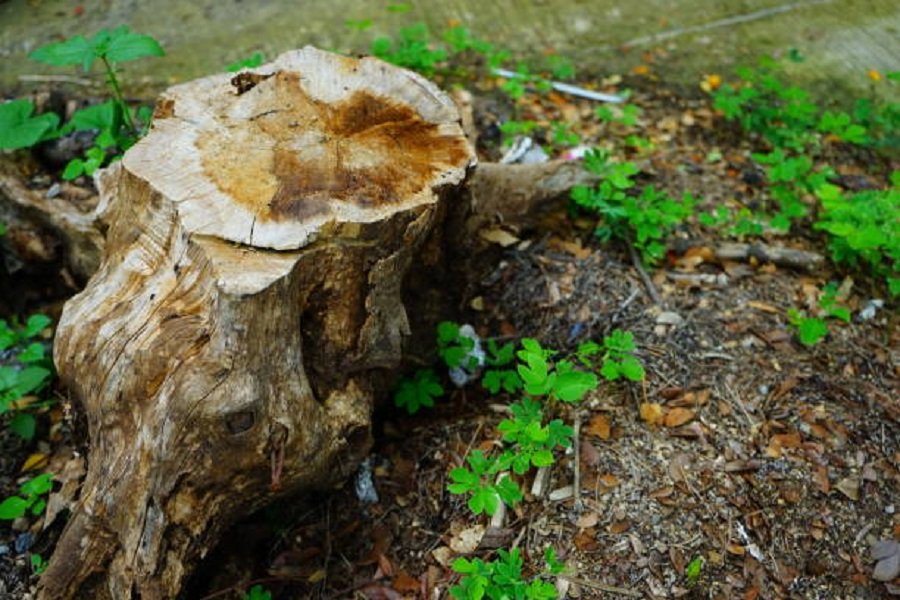Stump Removal Cost: What to Expect and How to Budget

Stump Removal
Removing an old tree stump from your yard can improve its appearance and provide additional space for planting new trees or installing landscape elements.
Breakdown of Costs
This price can increase if the stump has an extensive root system or is located in a difficult-to-reach area.
It’s important to note that these prices are rough estimates and actual costs may vary based on local rates and specific circumstances.
Factors Affecting the Cost
- Stump Size and Number:Additionally, removing multiple stumps at once might get you a discount per stump.
- Root System:Stumps with extensive root systems are more challenging to remove than those with shallow roots.
- Location:If the stump is located near a building or utility lines, it may require more care and time to remove safely.
- Type of Tree:Some types of trees have harder wood or more complex root systems that make them harder to remove. For example, removing a bamboo stump may be more expensive due it’s dense network of roots and its resilience.
- Condition of Stump:Rotting or old stumps can be easier to remove than fresh ones, but if it’s too decayed, it may require a more complex removal process.
Cost-Saving Tips
- DIY Removal:If the stump is small and you’re comfortable with doing physical work, you might consider removing it yourself using manual tools or a rental stump grinder.
- Group Rates:If your neighbors also need stump removal services, consider approaching a service provider together for a discount.
- Multiple Stumps:If you have more than one stump to remove, some companies will offer discounts for each additional stump.
Remember that while DIY removal can save money, it also comes with risks. Improper handling of equipment can cause injury and unsuccessful attempts at removal can make professional removal more difficult and costly later on.
Factors Influencing Stump Removal Cost
- Size of the Stump:Larger stumps typically have more extensive root systems, which requires more time and effort to fully remove.
- Number of Stumps:However, some companies might offer discounts for multiple stump removals.
- Tree Type:The type of tree greatly affects how difficult it is to remove its stump – hardwood trees like oak or hickory are denser and tougher to grind than softwood trees like pine or bamboo.
- Location & Accessibility: If the stump is hard to access (e. g. , located near a building or utility line), it may be more complicated and costly to remove.
- Root System: Some species, notably bamboo, have extensive root systems that spread far from the main trunk making them especially difficult and costly to remove completely.
- Soil Condition: Rocky or hard soil can make it more challenging to grind down a stump which may lead to additional costs.
- Local Rates: Costs also depend on local rates in your area as prices can vary based on regional economic conditions and competition among service providers.
Remember to provide as much detail as possible about the job (including tree type, size, location, etc. ) to ensure that you receive an accurate quote.
Stump removal is a job that requires specialist equipment and expertise to ensure it’s done safely and effectively.
Stump Removal Cost
Let’s delve deeper into these considerations to provide a better understanding of potential costs.
Size and Type of Stump
Hardwood trees such as oak or hickory are particularly challenging to remove due to their dense wood, potentially resulting in higher costs.
- Small stumps (up to 10 inches in diameter): $50 – $100
- Medium stumps (10-20 inches in diameter): $100 – $200
- Large stumps (20-30 inches in diameter): $200 – $400
- Extra-large stumps (over 30 inches in diameter): $400+
Please note that these prices are approximations and may vary based on your specific circumstances.
Method of Removal
- Chemical Stump Removal– This method uses chemicals to accelerate the decay process of a tree stump. It’s a slow process, but it’s also less labor-intensive than grinding or manual removal. The chemical itself is relatively inexpensive ($10-$20 per bottle), but you will also need to factor in labor costs if hiring professionals.
- Manual Stump Removal– This method is typically used for smaller stumps and involves digging and chopping the stump out of the ground.
Regional Factors
For instance, if you live in an area where bamboo straws are produced as a form of sustainable business (like Southeast Asia), it might be more expensive to have a bamboo stump removed due to its commercial value.
Obtaining multiple quotes from different service providers will ensure you get a fair price for your particular situation.
Stump Removal Cost
Stump removal is an important part of maintaining the aesthetics and safety of your property, especially if you have recently cut down trees.
Factors Influencing Stump Removal Cost
- Type of tree: Hardwoods like oak or ash are more difficult to remove as compared to softwoods such as pine or spruce. Bamboo stumps are also easier to remove due to their unique structure.
- Number of stumps: Generally, if multiple stumps need removal at one time on a single property, providers may offer a discount.
Average Stump Removal Price
The price for professional stump removal typically ranges from $60 – $350 per stump. However, this doesn’t include additional costs for services such as root system removal or grinding down remaining wood pieces.
It’s important to note that these prices are just estimates and actual costs may vary depending on labor rates in your area and specific conditions related to your project.
DIY vs Professional Stump Removal
Professional stump removal services, on the other hand, have experienced personnel and proper equipment. They also typically provide clean-up services after the removal.
From all these aspects, it’s clear that while stump removal may seem like a significant expense initially, it is an investment in maintaining a safe and attractive yard.
Stump Removal Cost
Stump removal is often a necessary step after tree felling, particularly if you’re looking to maintain the aesthetic appeal of your property or planning to utilize the space for other purposes.
- Type of Tree: Hardwood trees like oak or walnut have more robust root systems compared to softwood trees such as pine or bamboo. Therefore, their stumps are typically more difficult and costly to remove.
- Stump Age and Condition: Older and rotten stumps tend to be easier (and thus cheaper) to remove than fresh ones. If a stump has already decayed significantly, it may only require manual removal instead of grinding or heavy machinery.
- Location: If a stump is located near buildings, utilities or other obstacles that could potentially be damaged during the removal process, this can dramatically increase costs due to extra precautionary measures.
- Number of Stumps: Some companies offer a discount if you need multiple stumps removed at once.
In terms of methods used for stump removal,
- Stump Grindingis one method where a machine grinds the stump into sawdust down below ground level. This method leaves the roots behind but they typically decay over time. It’s common for this method to be priced according to diameter with prices per inch ranging from $2-$4.
- Complete Stump Removalinvolves both taking out the remaining tree trunk and roots which is more labor-intensive.
Please note that these are average costs and actual prices may vary.
While bamboo is often considered a weed due to its aggressive growth habits, it’s interesting to note that its stumps are relatively easier and less expensive to remove compared to hardwood trees. Moreover, bamboo can be an eco-friendly choice for various purposes such as producing bamboo straws, a sustainable alternative to plastic straws. Therefore, when considering tree removals and their subsequent costs, the type of tree (or grass, in bamboo’s case) plays a pivotal role.
It is advised to get quotes from multiple professionals before proceeding with any stump removal project to ensure you’re getting a fair price.
Tags:
